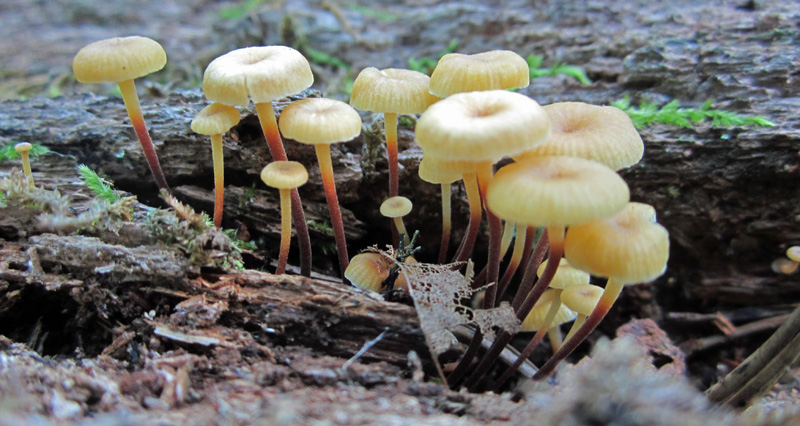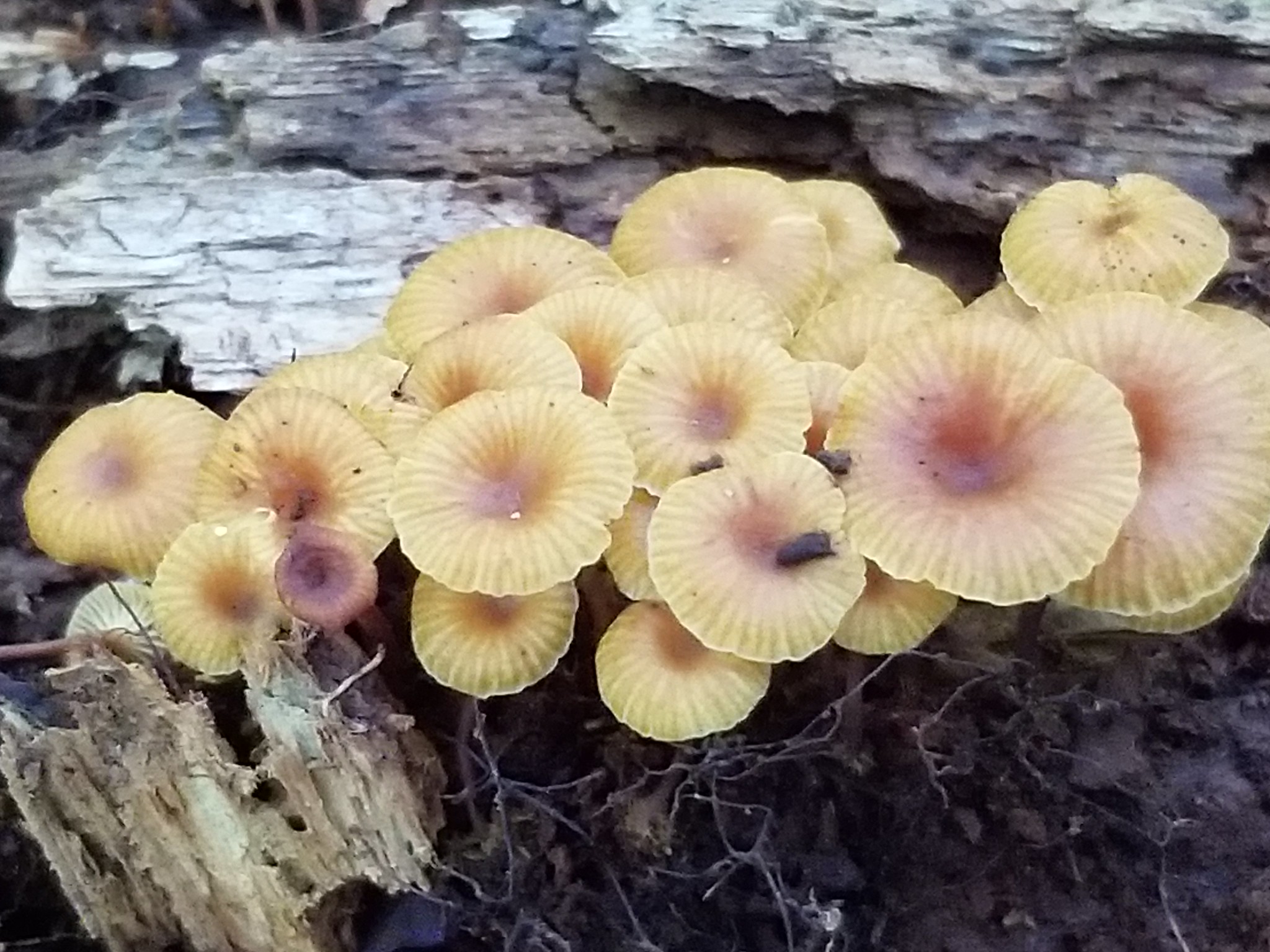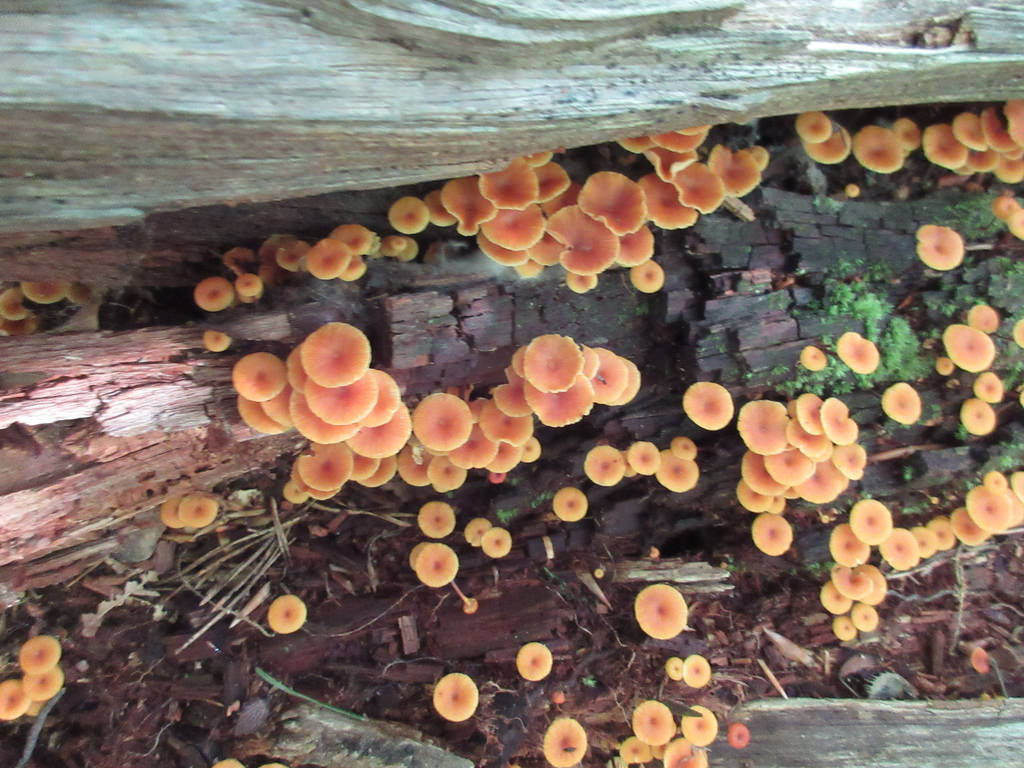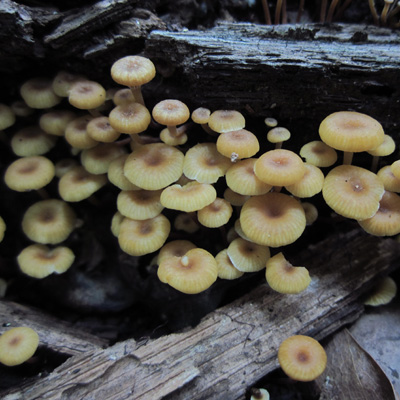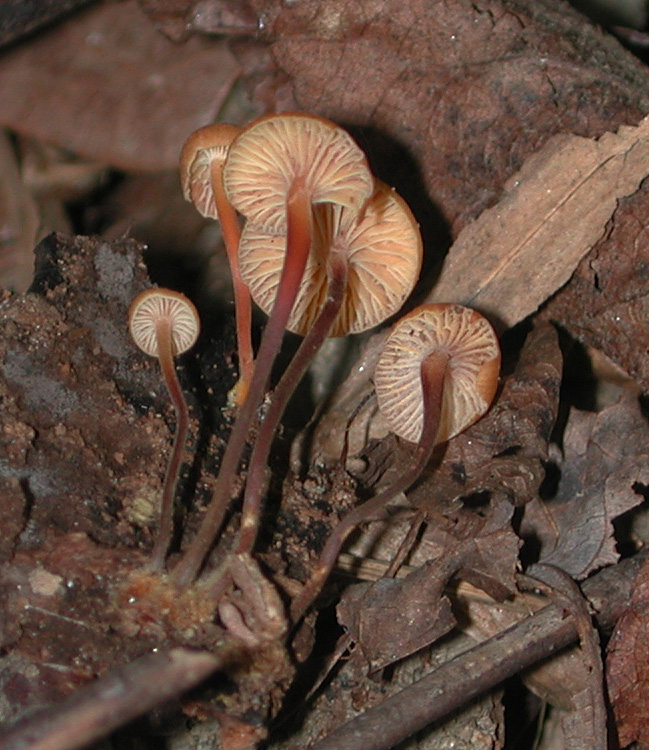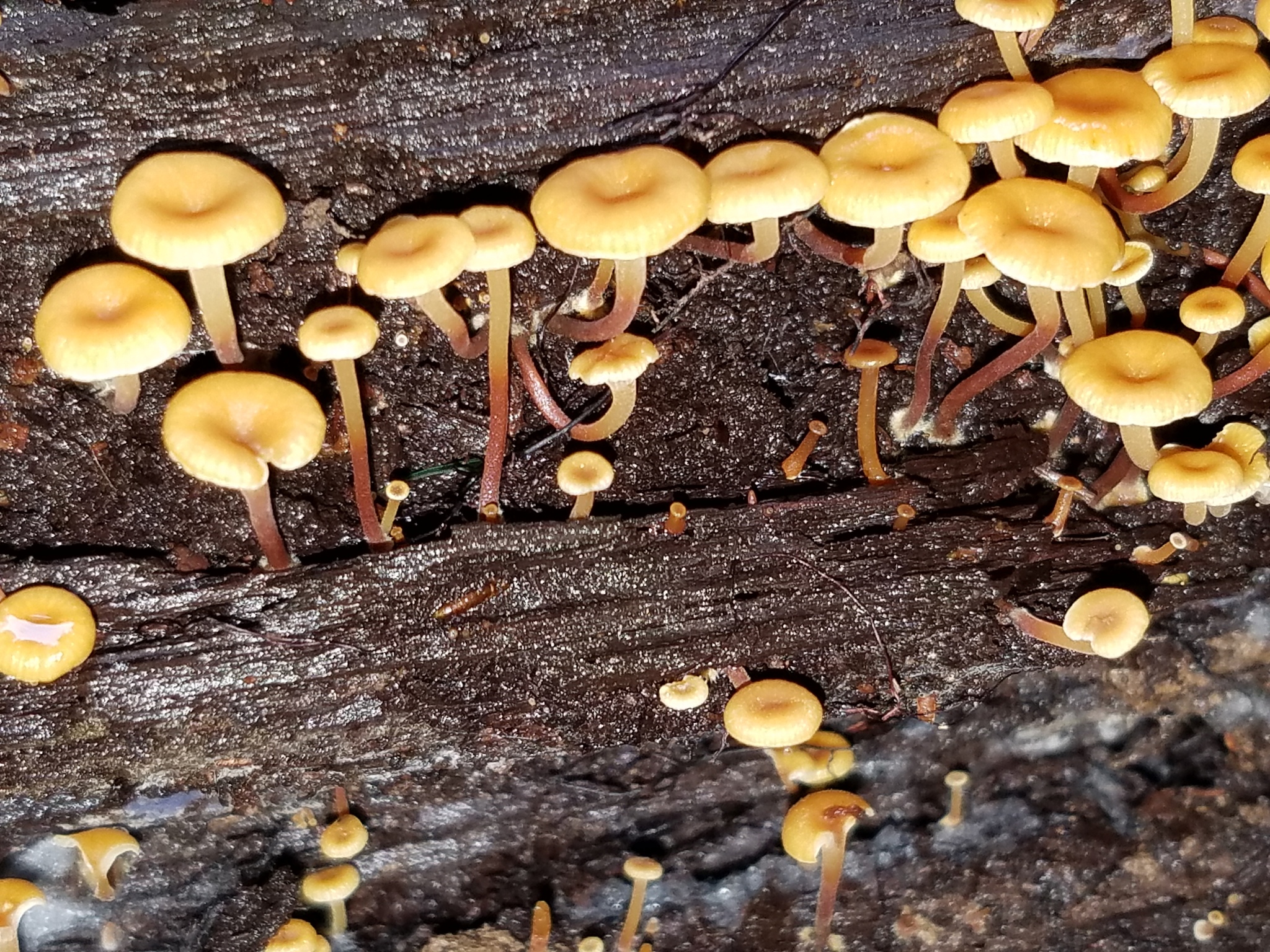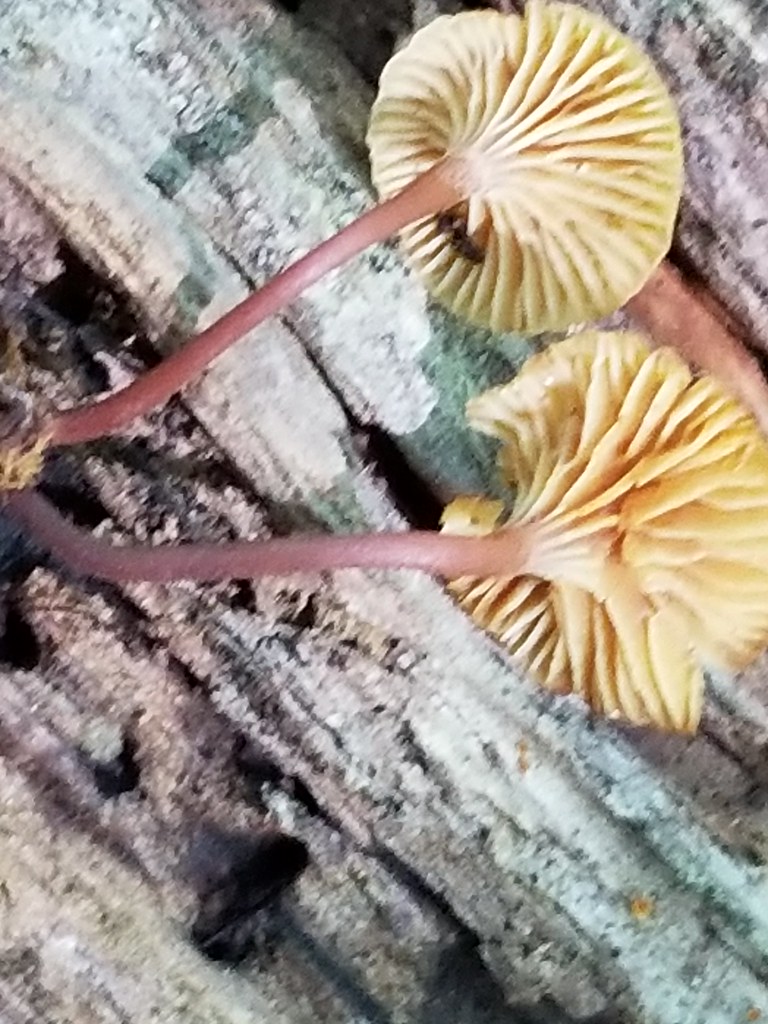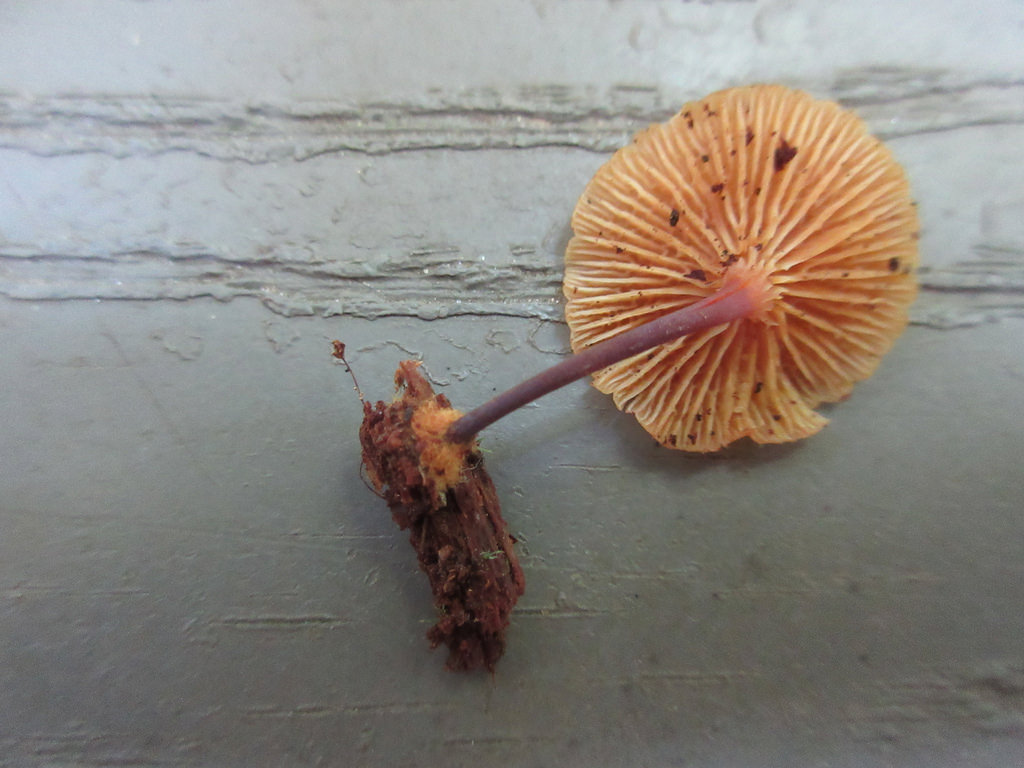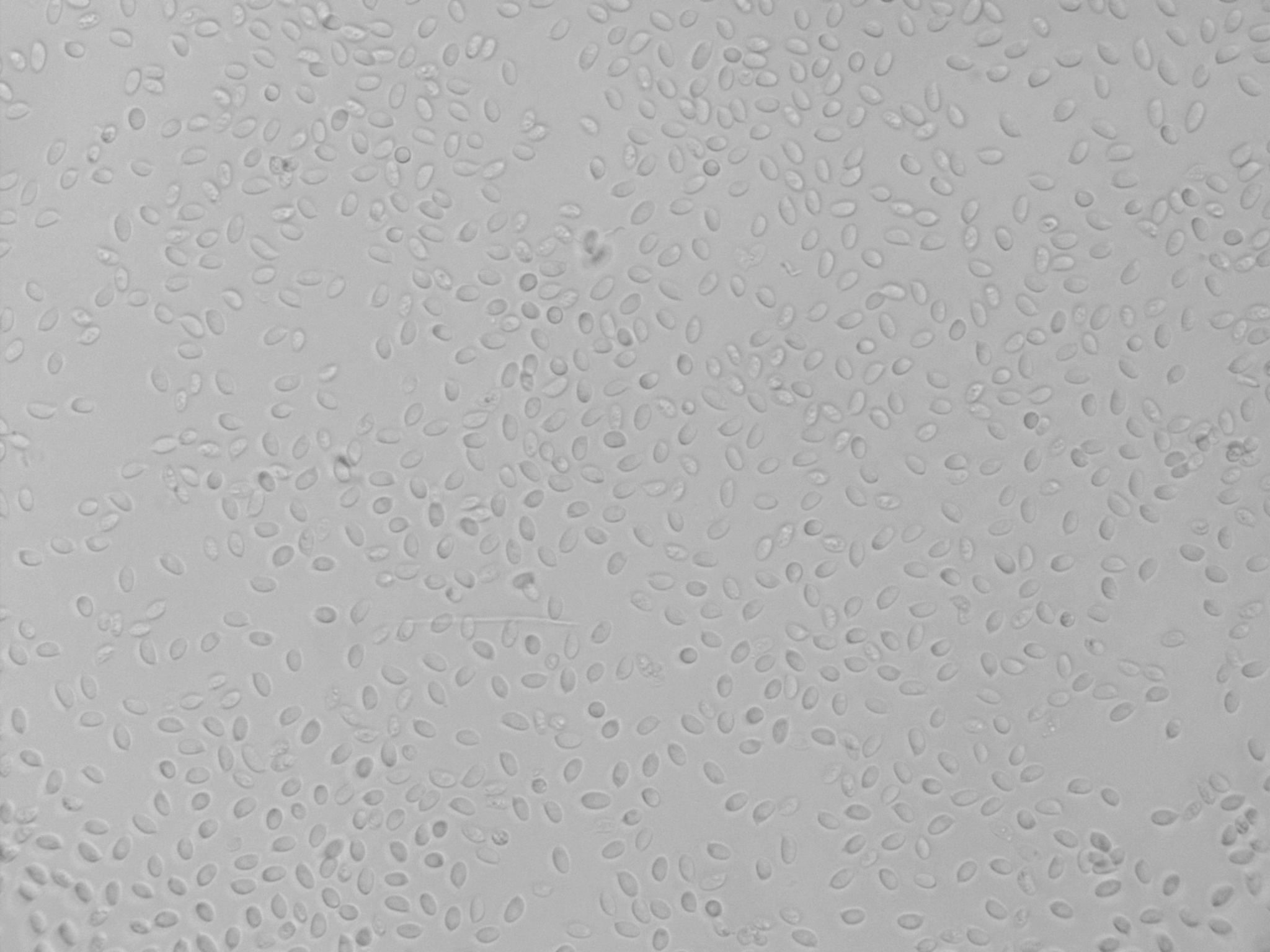Map Snapshot







29 Records
Status
Found in dense clusters on decaying conifer logs and stumps.
Description
Cap: Small; yellow to orange-brown, smooth, grooved at margin; convex to broadly convex with depressed disc in age. Gills: Pale yellow/pale orange, becoming decurrent, crossveins. Stalk: Yellow at top to dark red-brown at base; long hairs at base. Usually found in groups of dozens to hundreds. Similar X. kauffmanii present only on hardwoods. (J. Solem, pers. comm.)
Relationships
Associated with conifers versus hardwoods.
Seasonality Snapshot
Source: Wikipedia
| Xeromphalina campanella | |
|---|---|

| |
| Scientific classification | |
| Domain: | Eukaryota |
| Kingdom: | Fungi |
| Division: | Basidiomycota |
| Class: | Agaricomycetes |
| Order: | Agaricales |
| Family: | Mycenaceae |
| Genus: | Xeromphalina |
| Species: | X. campanella
|
| Binomial name | |
| Xeromphalina campanella | |
| Xeromphalina campanella | |
|---|---|
| Gills on hymenium | |
| Cap is convex or depressed | |
| Hymenium is decurrent | |
| Stipe is bare | |
| Spore print is white | |
| Ecology is saprotrophic | |
| Edibility is unknown or inedible | |
Xeromphalina campanella is a species of mushroom. The common names of the species include the golden trumpet and the bell Omphalina. The genus name Xeromphalina means "little dry navel" and campanella means "bell-shaped", respectively describing the mature and young shapes of the pileus, or cap.[2] The mushroom is also called fuzzy-foot.[3]

Description
[edit]The fruit body of X. campanella has a small umbrella-shaped cap, about .5–2 cm wide.[4] The thin brown stalk is 1–5 cm long and 1–3 mm wide, yellow at the apex, reddish brown below, with brown or yellow hairs at the base.[4][5] The gills are pale yellow to pale orange.[4] The spore print is pale buff.[5] When the species is young, their caps are bell-shaped. As they mature, the outer part of the cap expands and rises which leaves the center depressed, resembling a navel.[6]
Edibility
[edit]Although the species is not poisonous,[2] the mushrooms are small and bitter tasting with no value as edibles.[6][7] David Arora suggests that the mushroom is a small morsel that is hardly worth eating.[8] Despite many authors calling the mushroom inedible, author Bill Russell knows people that eat the mushroom frequently.[9]
Habitat
[edit]The fruiting occurs in clumps or very dense clusters on decaying logs, stumps, and woody debris of coniferous trees. The species is commonly found in North America.[5] At times, the species almost entirely covers old tree stumps.[2] The species can be found in any wet season of the year.[6]
Similar species
[edit]Xeromphalina campanelloides is distinguishable via microscopic features.[10] Xeromphalina kauffmanii resembles the species, but has a more yellow cap[10] and grows on decaying wood of broad-leaved trees.[2] Xeromphalina brunneola also resembles the species, but has smaller, narrowly elliptical spores, and differs in odor, taste, and cap color.[11] Xeromphalina cauticinalis, X. cornui, and X. fulvipes are also similar.[10]
References
[edit]- ^ "Xeromphalina campanella". Mycobank. Retrieved 21 December 2015.
- ^ a b c d C. Roody, William (2003). Mushrooms of West Virginia and the Central Appalachians. University Press of Kentucky. p. 124. ISBN 978-0-8131-9039-6.
- ^ G. Cassidy, Frediric (1991). Dictionary of American Regional English: D - H, Volume 2. Harvard University Press. ISBN 978-0-674-20511-6.
- ^ a b c Davis, R. Michael; Sommer, Robert; Menge, John A. (2012). Field Guide to Mushrooms of Western North America. Berkeley: University of California Press. p. 170. ISBN 978-0-520-95360-4. OCLC 797915861.
- ^ a b c McKnight, Kent H.; McKnight, Vera B. (1998) [1987]. A Field Guide to Mushrooms: North America. Houghton Mifflin Harcourt. pp. 196, 270. ISBN 978-0395910900.
- ^ a b c Metzler, Susan and Van (1992). Texas mushrooms: a field guide. University of Texas Press. p. 150. ISBN 978-0-292-75125-5.
- ^ Miller Jr., Orson K.; Miller, Hope H. (2006). North American Mushrooms: A Field Guide to Edible and Inedible Fungi. Guilford, CN: FalconGuide. p. 193. ISBN 978-0-7627-3109-1.
- ^ Arora, David (1986). Mushrooms demystified: a comprehensive guide to the fleshy fungi. Ten Speed Press. pp. 634. ISBN 978-0-89815-169-5.
Clavariadelphus truncatus.
- ^ Russel, Bill (2006). Field guide to wild mushrooms of Pennsylvania and the Mid-Atlantic. Penn State Press. p. 203. ISBN 978-0-271-02891-0.
- ^ a b c Trudell, Steve; Ammirati, Joe (2009). Mushrooms of the Pacific Northwest. Timber Press Field Guides. Portland, OR: Timber Press. pp. 132–133. ISBN 978-0-88192-935-5.
- ^ Bessette, Alan (1995). Mushrooms of North America in color. Syracuse University Press. p. 93. ISBN 978-0-8156-0323-8.
